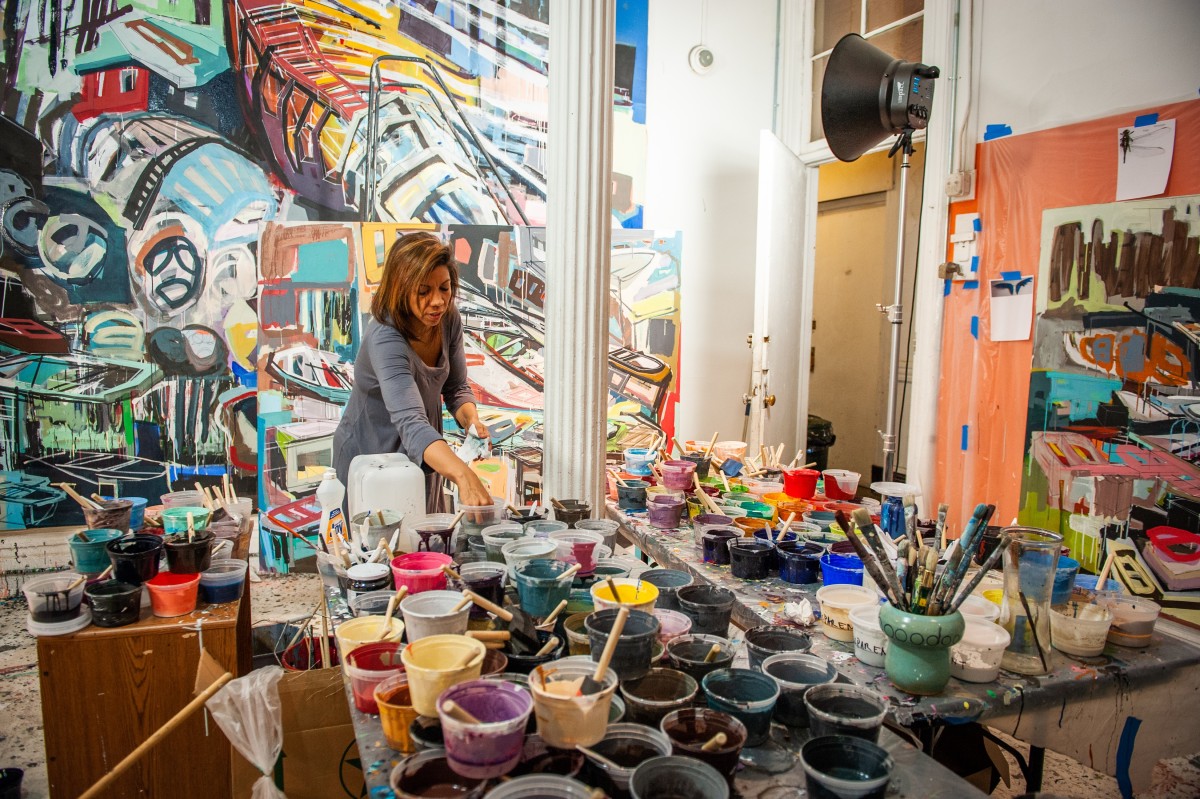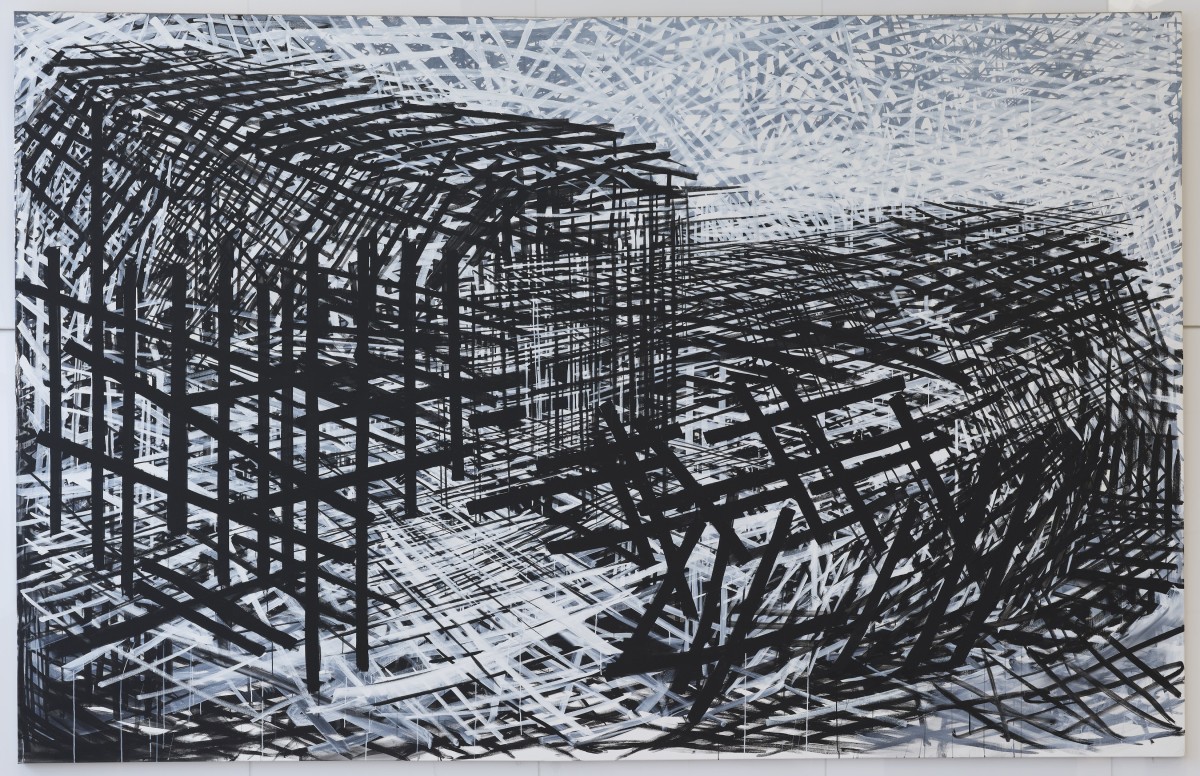Survival instincts
Learn more about the research and life experience that inspired two monumental Denyse Thomasos works.

Denyse in her studio with Arc in the background, February 8, 2010. © The Estate of Denyse Thomasos and Olga Korper Gallery, Photo © Nancy Borowick.
Denyse Thomasos’s unique brand of abstraction is the product of rigorous exploration and research. The works in just beyond take conceptual inspiration from the spheres of architecture, history, politics and geography, amalgamating the artist’s life experiences and viewpoint into bold creative expressions. The exhibition traverses multiple eras of Thomasos’s career and offers viewers pointed insights into the evolution of her practice – and her life in general.
The first large gallery in just beyond focuses primarily on Thomasos’s interest in grid formations and her first wave of large-scale abstract works completed throughout the 1990s. In one of her most overt iterations of the grid – Rally – Thomasos paints 22 stacks of short, horizontal brushstrokes in vibrant multicolour. Completed in 1994, the massive 3x4 metre work was inspired by her time spent teaching art in Philadelphia in the early 1990s. Witnessing the marginalization and challenging living conditions of Black communities during this time took a psychological toll on Thomasos, and significantly influenced her art practice. The stacked grids in Rally reference the rows of houses she observed in Philadelphia – many were painted bright blue or green and were situated alongside other dilapidated and abandoned homes. She later shared insights about the work, stating, “I developed my palette from the contradiction of brights and greys intermingled, symbolizing life among the dead.”
In her abstractions, Thomasos often referenced structures of confinement, specifically those that have historically affected Black communities. Two of her main areas of research were the prison-industrial complex and the ships used to transport enslaved Africans during the Trans Atlantic slave trade. Possibly her most direct reference to the latter – Dos Amigos (Slave ship) – takes viewers inside the hold of one of these monstrous, sinister vessels. Another large-scale canvas stretching 3 metres high by 4 metres wide, Dos Amigos is composed entirely of black and white cross-hatched lines. Central to this work is a large, capsule-like figure, split in half, resembling a cage. The title references a real 19th-century slave ship that carried enslaved Africans to Cuba. Thomasos’s black line work recreates the claustrophobic, intense conditions of the slave ship’s hold, and utilizes abstraction to personify the grim experience for viewers.
Thomasos’s focused research of structures of confinement continued well into the early 2000s, further developing her artistic language. She noted that her extended exploration of the topic was largely driven by a personal interest in the idea of survival – both externally and internally – stating, “More and more, I recognize that my interest in imprisonment in the outside world actually stems from my own feelings of isolation and the ways I have had to survive that. With every line, every mark, it’s a language that I weave together to survive.”
Denyse Thomasos: just beyond is on view now at the AGO until February 2023.
Presenting Partner
Presenting Partner
Supporting Sponsor
Supporting Sponsor
Contributing Sponsor
Contributing Sponsor
Lead Support
Lead Support
Generous Support
Generous Support

Contemporary programming at the AGO is supported by
Contemporary programming at the AGO is supported by



